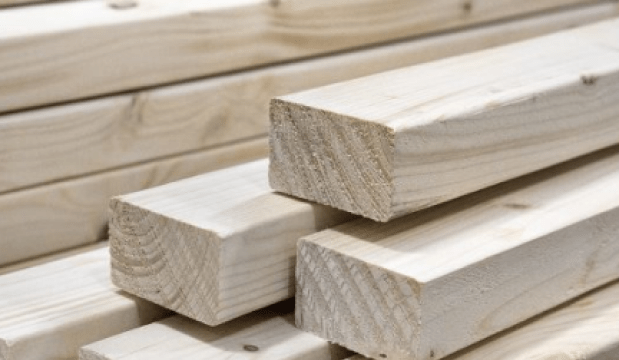Intro
In recent years, the application of CLS Timber has massively grown in popularity in the UK and is increasingly becoming the sure choice for DIY-enthusiasts and professionals alike. If you are working on a construction project, there is good reason why CLS timber should be considered for the job; it is exceptionally strong, durable and well-shaped for an array of different uses, making it the ideal choice for numerous internal structuring jobs. Within this guide is all you’ll need to know about the popular timber choice, including its characteristics and its best uses within the construction industry.
*** This guide has been crafted to help you to understand the uses and characteristics of CLS Timber. All information provided is compliant with BS EN 1995-1-1 recommendations, which is the British Standard that sets out the requirements for internal load-bearing timber walls, including how they can be used to support and transfer loads to foundations safely and without undue movement. ***What is CLS Timber?
First things first, just what is CLS Timber? CLS Timber is created from woods such as spruce, pine and fir, all of which go through the process of being kiln-dried to increase their stability. The wood is also often treated with preservative chemicals to prolong its life before being planned to ensure smooth rounded edges. The finished product has a reliably accurate tolerance and, due to a lack of large knots on its edges, is better than many other woods at reducing the spread of fire. Due to its slightly-rounded edges, CLS timber is also particularly easy to transport and safe to handle without the risk of too many splinters!
What does CLS Stand for?
The name CLS is borne from the Canadian market where it was originally manufactured, with the abbreviation standing for ‘Canadian Lumber Standard’. It was primarily used for frameworks in home construction, chosen for its durable and robust properties. Here in the UK, most of our CLS is sourced from Scandinavian or European softwoods, such as fir, spruce and pine.
What is CLS Timber Used For?
CLS has many benefits to consider when undertaking a construction project, including…

- Exceptional strength and superior durability
- Rounded edges make for easy transportation and safe handling
- Its smooth surface allows you to easily paint and stain your wood
- Available in a range of widths and lengths to minimise cutting time and reduce the cost from timber wastage
Due to this, CLS is ideal for…
- Creating internal partitioning walls
- Timber frame home construction
- Stud walling / studwork timber
- Interior framing
- Carcassing
CLS Grading & Sizing
CLS timber is sold in two grades and a range of sizes to suit whatever job you have at hand. Let’s explore each topic in more detail below…
Sizing
CLS Timber can be found in a range of sizes depending on what you need it for but is usually a 3x2 piece of timber in a standard batten shape.
At Builder Depot, we offer CLS in size two different sizes:
- 38mm x 63mm (3' x 2')
- 38mm x 89mm (4' x 2')
C16 VS C24
Not only does CLS come in different sizes, but different grades, too.
You’ll typically find timber strength graded as either C16 or C24. Both are kiln-dried to minimise the amount of moisture in the wood.
Whether you require C16 or C24 is dependent on the project at hand; although both are similar in appearance, C24 is the stronger of the two, so its added strength can be useful for load-bearing applications and larger projects. C24 is also deemed more attractive as it's more uniform, making it the better choice if you are planning to show off your CLS in a way that will be clearly visible.
However, in many cases, C16 will be perfectly fine to use, offering a solid level of strength at a more economical price.
Let’s break down the differences between the grades:
Whatever grade you choose, there are some things that can help you check the quality of your wood. These are some of the factors that are used to help grade the wood and split them into their C16 and C24 categories:
- Straightness of the timber
- Tightness of the grain
- Direction of the grain
- Split along the grain
- Slope of the grain
- Size of the knots
All of our CLS Timber has been slow-grown and features a smooth machine finish. Take a look through our full range of CLS timber.
For further information regarding the legal standards surrounding load-bearing timber walls, please see the Load-bearing timber walls page provided by the NHBC (National House Building Council).
If you’d like more information on what applications treated timber is apt to tackle or what different kinds of timber are available, take a look through our other timber guide pages:





